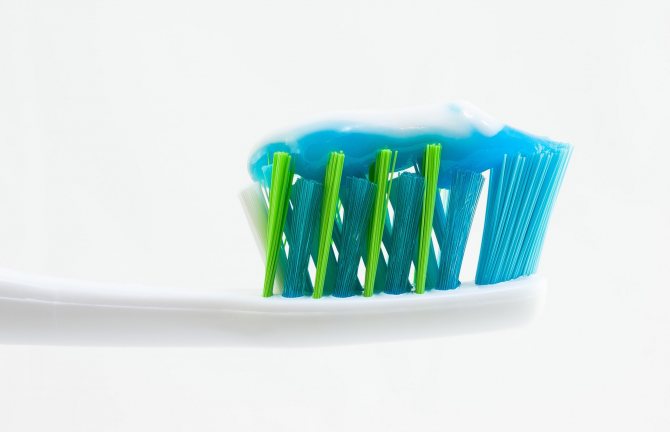General characteristics of fluorine
Fluorine has atomic number 9, and its atomic mass is 18.9984031. In the periodic table of chemical elements, fluorine is usually designated F. This component is poisonous. At its core, fluorine is a chemically active non-metal. It is a strong acidifier. Among all the elements from the halogen group, fluorine is the lightest. Under standard pressure temperature conditions, fluorine is a diatomic gas, pale yellow in color, with a pungent odor. Reminds me of ozone or chlorine. Fluorine formula-F2.
Fluorine: History of Discovery
Due to its high chemical activity, fluorine is not found in nature in its pure form, but scientists tried to describe it long before its isolation. Thus, the history of the discovery of fluorine stretched over several centuries. Already at the turn of the 15th–16th centuries, the mineral CaF2 was used in the smelting of metals and glass – fluorite (Latin fluorite means “to flow”), or fluorspar; in Russia it was also called spalt or spat.
In the 17th century, in glass production, hydrofluoric acid mixed with spar began to be used to obtain patterns on dishes, the nature of which K. Scheele and Lavoisier tried to establish. The latter suggested in its composition the presence of a chemical element unknown to science, which he called fluorum. Fluorine is still denoted by this term in European languages. And the name “fluorine” (from the Greek “death, destruction”) belongs to Ampere, who in 1810 managed to predict the properties of an unknown elementary substance as accurately as possible. During the 19th century, many chemists worked hard to isolate pure fluorine. About a dozen of them even died or were seriously poisoned during the experiments (G. Davy, the Knox brothers, Tenard and Gay-Lussac, etc.), which seems to confirm the accuracy of the deadly name “fluorine”.
Finally, in 1886, the French scientist Henri Moissan managed to obtain elemental chlorine in gaseous form using the electrolysis of hydrogen fluoride, using an extremely expensive device made of platinum and iridium, since the released gas was extremely aggressive. Later, he tested an electrolysis apparatus made of copper, with which fluorine reacted, but with the formation of a film that did not allow this reaction to continue.
Finding fluorine in nature. Where is fluoride found?
In its free state, Tuesday can be found in the environment, as it is part of compounds with various elements. Under certain conditions, they break down to form fluoride ions.
Fluorine compounds can be found in soil, water, and food. This element is vital for human health, however, it also has negative qualities. The amount of fluoride in the body should not exceed the permissible daily norm, as this can lead to negative consequences. Doctors believe that 0.5 mmg to 1-2 mmg is enough for an adult. If more fluoride enters the body, complications may arise.
Why is fluoride needed for the human body?
Now let’s answer the central question of the article: why, why is fluoride needed for the human body? Most of this microelement is found in our teeth (0.02%), bones (0.2–1.2%), thyroid gland and skin. It is found to a lesser extent in almost all biological substances. On average, about 2.6 grams throughout the body.
Perhaps everyone has heard about the benefits of fluoride toothpastes. There is no need to dispute this fact, because fluoride (in small quantities, of course) is necessary for the formation and maintenance, strengthening of the enamel covering the dental tissue and the dentin itself. It combines with calcium and phosphorus to prevent the development of caries and the appearance of microcracks. However, in areas where drinking water is adequately enriched with this microelement, you should not constantly use fluoridated pastes, as this can cause fluorosis - oversaturation of tissues with fluoride, which is usually expressed in spotting, darkening of the enamel, and, even worse, in disturbances in the structure and bone deformations. The presence of fluoride in the food of the expectant mother contributes to the birth of a child less susceptible to caries.
Bones will also be stronger with an adequate supply of this mineral. Fluoride is needed for normal skeletal growth and speeds up recovery in case of fractures . For older people, fluoride is valuable as a means of preventing osteoporosis.
The effect of fluoride on the thyroid gland is to inhibit its activity , which has long been adopted by doctors in the treatment of a number of endocrine disorders, such as hyperthyroidism (Graves' disease).
A positive effect of optimal fluorine content in the body on the immune system and hematopoietic functions , on regeneration in wounds and burns, as well as on the absorption of iron has been noted.
The radioprotective (protecting against radiation) effect of fluorine has been revealed: it prevents the deposition of strontium radionuclide in bone tissue and protects against strontium irradiation , and promotes the removal of heavy metal salts.
As we can see, by participating in mineral metabolism, fluorine has a multifaceted effect on the human body.
Food sources of fluoride. What products can you get fluoride from?
Products more saturated with fluoride are black and green tea. Fluorine is also included in nuts. Animal products are also rich in it. These include sea fish, seafood, shellfish, shrimp, mussels, mackerel, and cod. The component is included in cereals: wheat, rye, oats, corn, rice. It can also be obtained from beans, peas, and other legumes. By-products are rich in fluoride no less. Beef, veal and liver are the main sources of this trace element. You can also get it from vegetables and fruits. The richest foods are apples, fruits, carrots, and pumpkins.
Fluorine: Content in food
The main source of fluoride for us is drinking water, which is subject to testing for fluoride content, and in case of its deficiency (less than 5 mg per liter), it is specially enriched with sodium fluoride. It will be useful to know about the fluoride content in food in order to compensate for its deficiency if necessary. It is rich in seafood (fish and algae), tea (both black and green), meat (especially veal and lamb), liver, eggs and milk, lentils, oatmeal, rice, buckwheat, bran, walnuts, onions, apples , grapefruit.
Beneficial properties of fluoride and its effect on the body
Fluorine performs many useful functions in the human body. It is responsible for strengthening the immune system. Tur also participates in metabolism and mineralization of bone tissue. Protects tooth enamel. Fluoride prevents the premature development of osteoporosis and strengthens the bone skeleton. Thanks to fluoride, hair and nails grow, it stimulates blood circulation throughout the body.
Fluoride is included in many toothpastes for a reason; it helps protect tooth enamel from the development of caries. Thanks to fluoride, bone healing after a fracture occurs more quickly. Also, these microelements take part in the formation of the skeleton and maintain its functioning throughout life. The presence of this component in the body reduces acidity and bacteria, causing problems with teeth.
Helps iron be better absorbed, it accelerates the process of removing radionuclides and heavy metal salts from the body. the beneficial properties of fluorine have been evaluated in medicine. Its compounds are included in new drugs, blood substitutes, and artificial heart valves.
Fluoride in medicine
The use of fluorine in medicine is due to its properties and role in human physiological processes.
The use of fluoride-containing drugs and dietary supplements to improve the condition of teeth and bones and to prevent osteoporosis (Vitaftor, Sodium fluoride, Fludent, etc.) is widespread. For fluoridation of milk and permanent teeth (saturation of enamel and dentin with fluoride compounds), all kinds of sprays, ointments, gels and varnishes (“Vitoftor”, “Sensigel”, “Ftorlak”, etc.) are actively used. Deep fluoridation is carried out only by a dentist using special equipment. This procedure not only prevents caries, but also promotes the formation of enamel in children, helps existing dental restorations last longer in adults, and reduces hypersensitivity.
Fluorine in combination with iodine inhibits the excessive production of thyroid hormones and normalizes the secretory activity of the thyroid gland in Graves' disease (hyperthyroidism).
Fluoride-containing medications are used in the treatment of cancer. For example, the antitumor drug Fluorouracil has been used since the mid-twentieth century to this day.
Many medications intended for the treatment of neuropsychiatric diseases (schizophrenia, epilepsy, etc.) include fluorine atoms: muscle relaxants, neuroleptics, tranquilizers and sleeping pills.
Fluoride is also included in a number of glucocorticoids prescribed for dermatological diseases: Betamethasone, Dexamethasone, Fluprednisolone, etc.
Modern pharmacology is closely linked with fluorine chemistry, and today atoms of this microelement are included in drugs being developed for a wide variety of ailments .
Harm of fluoride to humans. Negative effects of fluoride on the body
Fluoride can cause harm only when a large dosage enters the body. If the daily requirement of microelements is regularly exceeded, a person develops a severe case of arthritis, fluorosis of bones and teeth. An excess of fluoride causes problems in the functioning of the endocrine system and suppresses the functioning of the thyroid and pineal glands. Because of this, metabolic processes in the body are disrupted.
Fluoride is inherently a powerful neurotoxin that promotes the accumulation of aluminum in the brain. This component can lead to the development of Alzheimer's disease and a number of nervous and mental disorders. However, not only an excess of fluoride is dangerous. If the body has too low a percentage of the component, caries, periodontal disease develops, and nails and hair begin to break.

Cons of fluoride
- An excess of fluoride leads to fluorosis, makes teeth speckled, they lose their natural flexibility and elasticity, and become brittle.
- An excess of sodium fluoride negatively affects the nervous and circulatory systems. It is more often found in toothpastes and gels. Patients with kidney disease or diabetes are advised to use pastes and gels as recommended by specialists and not to exceed the norm.
- Excess fluoride negatively affects the functioning of the thyroid gland. The toxicity of the substance can lead to a decrease in immunity, which will make a person more vulnerable to various diseases.
- Symptoms of excess fluoride can include increased fatigue, dryness and pale skin.
Lack of fluoride in the body. What are the consequences of fluoride deficiency?
Fluoride is an essential component for maintaining human health. Despite the fact that a person needs a very small amount of the component, its deficiency is quite common. You can get less of a microelement if you stop getting enough drinking water. If the amount of microelement is insufficient, iron begins to be absorbed worse, which leads to the development of iron deficiency anemia and caries. The quality of tooth enamel also suffers, because fluoride is washed out by fluorapatites.
The main manifestations of fluoride deficiency are dental caries and osteoporosis. To avoid the development of caries, it is necessary to consume sufficient amounts of drinking water and foods containing fluoride. And also use toothpastes, gels, nail polishes, hair sprays that contain this microelement. However, it is important to understand that fluoride is not a cure for tooth decay. It only helps to avoid its development in the human oral cavity.
Daily fluoride requirement
Daily intake changes as you get older. Additionally, the norms are slightly different for men and women. Dosages also vary by weight: if your body weight is below normal, your microelement intake will have to be slightly reduced.
For children
As you get older, the dosage increases. Infants up to six months need to consume only 0.1 mg per day. From 7 to 12 months, the daily dosage is 0.5 mg. Then, up to 3 years, you need to receive 0.7 mg of the substance every day. From 4 to 8 years, the dosage is 1 mg, from 9 to 13 years – 2 mg.

For women
Girls over 14 years of age need 3 mg of fluoride daily. The dosage does not change: the same amount is required for adult women.
For men
In the period from 14 to 18, young men require 3 mg of the microelement. After 19 years of age, an adult male needs 4 mg daily.
Excess fluoride in the body. What happens when there is an excess of a microelement?
If a person drinks too much water that contains fluoride, exceeding its norm in the body, then he may develop the following ailments:
- Pathological changes in bone structure;
- the appearance of chalky stains on the teeth;
- violation of enamel strength;
- development of dental fluorosis;
- frequent nausea;
- vomit;
- disruption of the central nervous system;
- decreased blood pressure;
- failure of metabolic processes in the body;
- slowing down blood clotting;
- development of bone fluorosis.
The greatest risk of excess fluoride from drinking water is observed in the northern regions of Russia, as well as in those places where aluminum production enterprises are located.
Chronic poisoning[edit | edit code]
This poisoning is called fluorosis. In humans, it manifests itself mainly as osteosclerosis and patchy lesions of the enamel. Osteosclerosis is characterized by an increase in bone tissue density due to the activation of osteoblasts and the replacement of hydroxyapatite with denser fluorapatite. X-rays reveal bone damage of varying degrees: from subtle changes to pronounced thickening of long tubular bones, multiple exostoses with calcification of ligaments, tendons and muscle attachment sites. In the most severe cases, the patient loses his ability to work and becomes crippled.
Spotty enamel lesion
is a well-known pathology, first described more than 60 years ago. In mild cases, opaque, chalk-like spots of irregular shape appear on the tooth enamel. In severe cases, separate or merging dark brown or black depressions are visible on the surface of the teeth. The damage occurs due to a disruption in the ability of tooth cells to produce enamel. Such a violation can have various causes, and excessive fluoride intake into the body is only one of them.
Spotty enamel damage is a disease of developing teeth; excess fluoride no longer affects erupted teeth. This is one of the first visible signs of fluorosis in a child. Chronic consumption of water with a fluoride concentration of about 1 mg/l can lead to only very minor changes in enamel in 10% of children; at a fluorine concentration of 4-6 mg/l, dental damage, much more pronounced, is observed in almost 100% of children.
Previously, in some areas of the world, for example in Pompeii (Italy) or near Pikes Peak Mountain (Colorado, USA), where the water contains large amounts of fluoride, severe damage to tooth enamel was very common. Fluoride is present in very high concentrations in the water of some arid areas of the southwestern United States, and bone damage is common in livestock grazing there. US federal legislation currently requires that fluoride levels in drinking water in these areas be reduced or that water supplies be used in other ways. Chronic consumption of water with a fluoride concentration of 4 mg/l over time leads to a decrease in compact bone mass and accelerated bone resorption (Sowers et al., 1991).
How to avoid the dangerous effects of fluoride on the body?
You should check with your utility company to see if your water is treated with fluoride. If the answer is yes, then refuse to cook in aluminum cookware, since fluorine forms a dangerous compound with this component that can cause the development of disease in the human body. Also, do not use tap water for cooking or drinking. Doctors recommend that pregnant women and children not consume foods prepared in such water; for them, exposure to fluoride is especially dangerous. To avoid the negative effects of fluoride, use mineral water for cooking.
Pros of fluoride
- Fluoride prevents microbes from attaching to the enamel surface, therefore, tartar does not form, which is the main cause of tooth decay.
- Fluoride helps break down carbohydrates, which form acid that destroys enamel.
- Fluorine forms the compound fluorapatite, which is responsible for the permeability of enamel, making it more resistant to acids.
- Fluoride prevents the proliferation of microbes in the oral cavity.
- Fluoride interacts with calcium ions, making teeth denser and strengthening the dental structure.
The benefits of fluoride for human teeth. Do I need to treat my teeth with fluoride?
Many people don't even think about the fact that they are not getting enough fluoride. It is necessary to consult with a doctor and check the condition of your teeth to make sure that they have enough microelements. People who take medications that cause dry mouth should have their teeth treated with fluoridation to improve their resistance to tooth decay. This procedure will also be useful for those who suffer from diseases that cause dry mucous membranes.
It is advisable to additionally treat teeth with fluoride for those who have receding gums. With this problem, bacteria have a greater chance of getting on the surface of the tooth, which leads to the development of caries and cracks. This procedure is especially necessary for people who have installed braces. Metal plates can cause cavities. It is also worth strengthening your teeth if you are undergoing radiation therapy to the head or neck. This type of therapy damages the salivary glands, leading to dry mouth.

And yet, where do you get fluoride?

Water enriched with fluoride is more likely to harm you.
Researchers have calculated that to obtain the daily requirement of fluoride from food, an adult would have to eat more than 300 grams of walnuts and drink at least 20 liters of fresh milk every day!









